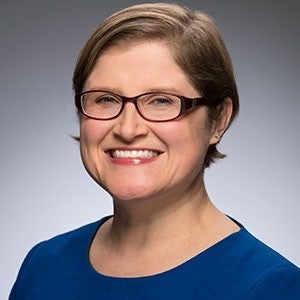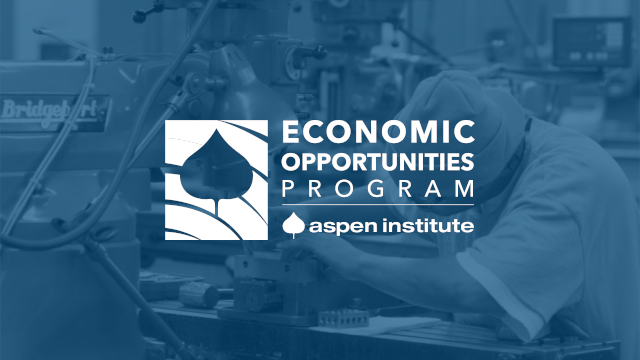
Haley Glover, Director, UpSkill America
Last week, I saw a great visual flit across my Twitter feed (great content and great because it was a welcome reprieve from… everything else that happened last week). It referred to the Greek words for time: Kronos, which is the concept of linear — 24 hours in a day — time, and Kairos, which is qualitative time, an opportunity for the right action and the right moment to intersect.
The first month of a new job is Kairos time. I am officially closing out my first month as director of UpSkill America. I have spent hours connecting with our partners — corporate leaders who are dedicated to supporting frontline talent — hearing about their ideas and concerns. I’ve engaged with collaborators and funders, learning about their priorities and initiatives. I have spent my time both catching up on what has come before and thinking critically about what comes next.
Nearly eight years ago, when UpSkill America was initiated in partnership with the Obama Administration and leading workforce, education, employment, training and labor organizations, “upskilling” was a novel word. Corporate education benefit programs, especially those focused on workers without degrees, were few and far between. There was a lot of talk about the “future of work,” but it still felt like the future was a long way off.
It is an opportune moment to reflect on where we should go from here. One month in, here’s what I’m thinking about.
I have been thinking about goalposts. When our work began, we used words like “access” and “opportunity” — important words, to be sure. Moving forward, I want our work to marry opportunity with outcomes, never talking only about upskilling but about the results of upskilling, particularly the career advancements to which education and training should lead.
We have referred to ourselves as a movement. I am not convinced. There is too much we don’t know about inputs and outcomes, and too many questions. The question I get most frequently is about scale — how many? We are still in the dark about just how many learners are getting high-quality, on-the-job learning, utilizing tuition benefits, gaining credentials, advancing in their careers, and other key inputs and outcomes resulting from our collective work. Not being able to answer that basic question often precludes the more important questions — are programs equitably designed? Are students completing high-quality programs? What happens afterwards? And so on. And I am positive that frontline workers who stand to benefit from our work are still underinformed about the education and training options available to them.
I also want us to understand the environments where employer-led learning thrives within companies, communities, states, and nationally. What are the policies that incentivize investments in talent, and how can we help more businesses achieve a double bottom line, doing well by doing good? State and local governments, too, should consider how they are investing public resources and developing ecosystems where public and private learning efforts can be successful.
Learning happens everywhere. As more employers design high-quality education and training for incumbent workers, and even begin credentialing their programs, it will be more important than ever for all of that learning to be documented and recognized toward whatever comes next. This practice of recognizing learning is a win-win. Companies that get clear about the learning gained in work-based programs not only empower workers but can save money. Last year in a previous role with Lumina Foundation, I wrote about a study with partners at Walmart that showed the company saved more than $5 million by articulating learning gained through its Academy program for college credit through Live Better U. Beyond cost savings, I want to make a concerted effort to elevate the kind of learning that literally makes our economy and society function — learning we have too often marginalized, and learning gained through work we have too often referred to as “low-skill.”
So, that is month one in a nutshell. What will month two or month six bring? You’ll see frequent updates, both about the great work our partners continue to do to advance frontline talent, and from us as our ideas turn into reality. You’ll see insights on practices that are generating real, positive outcomes for companies and frontline employees. And you’ll see a refreshed action plan with more clearly articulated focus areas and identity for our work.
The time is right for us to take some big shots. I hope you’ll join us as we determine the future of UpSkill America and what we can do together to advance America’s frontline talent. I’d love to hear from you via LinkedIn or directly at haley.glover@aspeninstitute.org.
Share
Tweet Writing on the @AspenInstitute blog, @upskillamerica Director @HaleyGlover17 reflects on her first month on the job — connecting with partners, engaging with collaborators, and thinking critically about what comes next.
Tweet We are still in the dark on key #upskilling questions. Are students getting high-quality learning? Are programs designed equitably? And what happens afterward? As director of @upskillamerica, @HaleyGlover17 is working to shed light on these questions.
Tweet When @upskillamerica started, we used words like “access” and “opportunity.” Now let’s marry opportunity with outcomes — never talking only about upskilling, but about the career advancements to which education and training should lead.
Tweet Director @HaleyGlover17 lays out a vision of @upskillamerica’s future — including frequent updates from UpSkill and partners; insights on successful, real-world practices; and a refreshed action plan for UpSkill’s work and identity.
Join the upskilling movement
UpSkill America is an employer-led movement that promotes training and advancement practices to help workers progress in their careers and move into better-paying jobs. UpSkill America is an initiative of the Economic Opportunities Program.
The Economic Opportunities Program advances strategies, policies, and ideas to help low- and moderate-income people thrive in a changing economy. Follow us on social media and join our mailing list to stay up-to-date on publications, blog posts, events, and other announcements.

